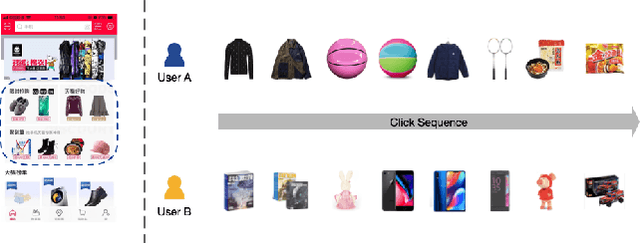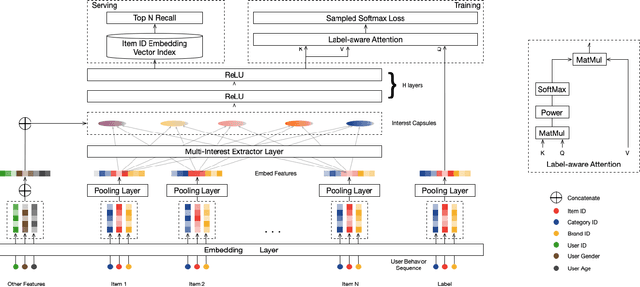Dik Lun Lee
Financial Assets Dependency Prediction Utilizing Spatiotemporal Patterns
Jun 13, 2024Abstract:Financial assets exhibit complex dependency structures, which are crucial for investors to create diversified portfolios to mitigate risk in volatile financial markets. To explore the financial asset dependencies dynamics, we propose a novel approach that models the dependencies of assets as an Asset Dependency Matrix (ADM) and treats the ADM sequences as image sequences. This allows us to leverage deep learning-based video prediction methods to capture the spatiotemporal dependencies among assets. However, unlike images where neighboring pixels exhibit explicit spatiotemporal dependencies due to the natural continuity of object movements, assets in ADM do not have a natural order. This poses challenges to organizing the relational assets to reveal better the spatiotemporal dependencies among neighboring assets for ADM forecasting. To tackle the challenges, we propose the Asset Dependency Neural Network (ADNN), which employs the Convolutional Long Short-Term Memory (ConvLSTM) network, a highly successful method for video prediction. ADNN can employ static and dynamic transformation functions to optimize the representations of the ADM. Through extensive experiments, we demonstrate that our proposed framework consistently outperforms the baselines in the ADM prediction and downstream application tasks. This research contributes to understanding and predicting asset dependencies, offering valuable insights for financial market participants.
Influential Recommender System
Nov 23, 2022Abstract:Traditional recommender systems are typically passive in that they try to adapt their recommendations to the user's historical interests. However, it is highly desirable for commercial applications, such as e-commerce, advertisement placement, and news portals, to be able to expand the users' interests so that they would accept items that they were not originally aware of or interested in to increase customer interactions. In this paper, we present Influential Recommender System (IRS), a new recommendation paradigm that aims to proactively lead a user to like a given objective item by progressively recommending to the user a sequence of carefully selected items (called an influence path). We propose the Influential Recommender Network (IRN), which is a Transformer-based sequential model to encode the items' sequential dependencies. Since different people react to external influences differently, we introduce the Personalized Impressionability Mask (PIM) to model how receptive a user is to external influence to generate the most effective influence path for the user. To evaluate IRN, we design several performance metrics to measure whether or not the influence path can smoothly expand the user interest to include the objective item while maintaining the user's satisfaction with the recommendation. Experimental results show that IRN significantly outperforms the baseline recommenders and demonstrates its capability of influencing users' interests.
Multi-Interest Network with Dynamic Routing for Recommendation at Tmall
Apr 17, 2019



Abstract:Industrial recommender systems usually consist of the matching stage and the ranking stage, in order to handle the billion-scale of users and items. The matching stage retrieves candidate items relevant to user interests, while the ranking stage sorts candidate items by user interests. Thus, the most critical ability is to model and represent user interests for either stage. Most of the existing deep learning-based models represent one user as a single vector which is insufficient to capture the varying nature of user's interests. In this paper, we approach this problem from a different view, to represent one user with multiple vectors encoding the different aspects of the user's interests. We propose the Multi-Interest Network with Dynamic routing (MIND) for dealing with user's diverse interests in the matching stage. Specifically, we design a multi-interest extractor layer based on capsule routing mechanism, which is applicable for clustering historical behaviors and extracting diverse interests. Furthermore, we develop a technique named label-aware attention to help learn a user representation with multiple vectors. Through extensive experiments on several public benchmarks and one large-scale industrial dataset from Tmall, we demonstrate that MIND can achieve superior performance than state-of-the-art methods for recommendation. Currently, MIND has been deployed for handling major online traffic at the homepage on Mobile Tmall App.
Billion-scale Commodity Embedding for E-commerce Recommendation in Alibaba
May 24, 2018



Abstract:Recommender systems (RSs) have been the most important technology for increasing the business in Taobao, the largest online consumer-to-consumer (C2C) platform in China. The billion-scale data in Taobao creates three major challenges to Taobao's RS: scalability, sparsity and cold start. In this paper, we present our technical solutions to address these three challenges. The methods are based on the graph embedding framework. We first construct an item graph from users' behavior history. Each item is then represented as a vector using graph embedding. The item embeddings are employed to compute pairwise similarities between all items, which are then used in the recommendation process. To alleviate the sparsity and cold start problems, side information is incorporated into the embedding framework. We propose two aggregation methods to integrate the embeddings of items and the corresponding side information. Experimental results from offline experiments show that methods incorporating side information are superior to those that do not. Further, we describe the platform upon which the embedding methods are deployed and the workflow to process the billion-scale data in Taobao. Using online A/B test, we show that the online Click-Through-Rate (CTRs) are improved comparing to the previous recommendation methods widely used in Taobao, further demonstrating the effectiveness and feasibility of our proposed methods in Taobao's live production environment.
 Add to Chrome
Add to Chrome Add to Firefox
Add to Firefox Add to Edge
Add to Edge